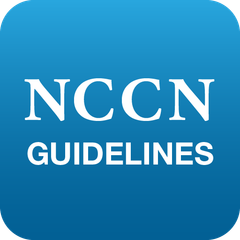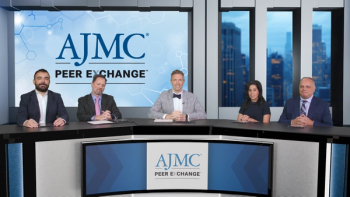
Benefits and Limitations Surrounding Current Treatment for PV
Dr Gerds explores the pros and cons of the present treatment approach for PV.
Episodes in this series

Aaron Gerds, MD, MS: To date for the MPNs [myeloproliferative neoplasms] and polycythemia vera [PV], the only treatment that is potentially curative that can eliminate the disease for the rest of an individual’s life without maintenance therapy is a bone marrow or stem cell transplant. Of course, the risks of this are incredibly high and relative to the risk of polycythemia vera; this treatment is not indicated for these patients. Certainly, if a patient’s disease progressed to a myelofibrosis or an accelerated blast phase disease, then transplant would certainly be indicated because the predicted lifespan would be much shorter for those folks. Outside of transplant, we use a combination of reductive therapies, whether we’re talking phlebotomy, hydroxyurea, interferons, or ruxolitinib. And each of these drugs have pluses and minuses. Hydroxyurea is oral. It’s been around for a very long time, so it has a well-established toxicity profile. We know that it can cause alopecia, changes in the nails, mouth sores, skin ulcers, precancerous skin lesions, or increase the risk for precancerous skin lesions and nonmelanoma skin cancers. And we want to manage these things appropriately. Someone who has had a huge sun exposure and could potentially have a lot of acne and keratosis, hydroxyurea may not be the best choice for that individual and we would want to avoid that based on the potential [adverse] effect profile. For interferons, it’s injectable. A different mode of administration, which I think is a standout feature. It’s given either weekly in the case of pegylated interferon or every other week in the case of ropeginterferon. So some patients do find that more convenient. It has a different [adverse] effect profile. Of course, it can cause…liver enzyme elevation and other -itises within the body like thyroiditis or colitis. So we want to be mindful of those types of things. There are reports, certainly with older forms, that interferons have an increased risk of depression. We don’t see that with the longer-acting interferons, but it’s still something we keep an eye on, nonetheless. So all these considerations come into play when thinking about a therapy. We think about interferon as a therapy. The standout feature that separates interferon from potentially hydroxyurea is its ability to lead to deep remissions, molecular responses, and even molecular remissions. And so in trying to think about the pluses and minuses in weighing those types of things with an individual, I think that does play into a lot of treatment choice factors, into treatment decisions. Ruxolitinib has been around also for some time. It was approved in 2015 for the treatment of polycythemia vera after patients have already received hydroxyurea. And it can cause [adverse] effects as well that we want to think about when initiating therapy, namely weight gain and increases in cholesterol, which we believe both of those are due to elevated leptin levels in patients on ruxolitinib. It can lead to liver enzyme elevation as well as increase the risk for nonmelanoma and precancerous skin lesions. There’s also a risk of viral reactivation, such as shingles, that we want to be mindful [about for] patients when starting ruxolitinib. So these [adverse] effect profiles can kind of help sort out these drugs. In terms of long-term data, All 3 agents have well-established [adverse] effect profiles and a lot of long-term follow-up with these drugs [that] are not particularly new. And so we do feel quite adept at dealing with the [adverse] effects that can come along. So I think in terms of longevity and durability of these therapies, all 3 of these therapies can be quite durable in terms of a valuable therapeutic for an individual.
In determining risk for any polycythemia vera, there are really 2 types of risk we want to predict. One is just overall survival, who has aggressive disease versus less aggressive disease. And right now, the lead method of determining overall disease risk or overall survival is the [Mutation-enhanced] International Prognostic Scoring System for PV, or MIPSS-PV, [to] reincorporate not only common clinical factors like thrombosis history, but also molecular factors. What mutations are a part of this disease outside the JAK2 mutations. And so when sitting down and kind of determining overall the overall risk, that’s certainly the model to consider. But for the application of treatment, we often think again about this kind of classic thrombus hemorrhagic or classic thrombosis risk model where we really break down patients into 2 categories, high risk and low risk, based on age and thrombosis history. That seems like a very narrow focus, and there’s certainly been a lot of publications in the recent past thinking about other factors you may want to consider initiating cytoreductive therapy, thus placing a patient [at] a higher risk, thus triggering cytoreductive therapy for that individual, cytoreductive with an agent like hydroxyurea or interferons. And those risk factors include elevated white blood cell count, which has been shown now over a number of studies to be associated with increased risk of thrombosis. In particular, the [phase 4] REVEAL study [NCT02252159], which had a prospective trial of over 2500 PV patients, showed that white blood cell counts as high as 11.5 or even 12 are associated with increased risk of thrombosis. Other studies have looked at JAK2…and it linked that to increased risk of thrombosis. So I definitely think we are moving toward an era where we can reconsider what we should be doing for predicting thrombosis risk in these patients and perhaps altering our classic model that has been around for quite some time and adding factors to improve the way we think about thrombosis rates in these patients. Lastly, there are efforts not only in MPNs but other diseases looking at the use of machine learning or even artificial intelligence models to better predict thrombosis risk or disease risk in general for these patients. And I think that could certainly be the next wave of how we think about disease risk and calculate disease risk for these patients. Thus, improve upon outcomes and select the best therapy appropriate for that individual.
The guidelines set out to guide clinicians in a couple of different ways. Obviously, the selection of initial therapy, but also monitoring the therapy going forward. Again, with PV, the keys are keeping the hematocrit under 45[%] as well as addressing any symptoms that might be related to the polycythemia vera that could emerge, such as night sweats, fevers, itchy skin, and the like. Those are clear triggers to consider altering therapy, either increasing or decreasing the dose of the agent they’re currently on, as well as thinking about alternative agents. And in the guidelines, there are kind of clear triggers for treatment failure and considering alternative therapies. But the idea is that it’s to provide a framework, and that although a patient may not be hitting kind of well-defined clinical trials–based treatment failure parameters, that we should be thinking about trying to find the most optimal therapy for that individual. I always give the example of someone on hydroxyurea who may have a very elevated MCV, but maybe their hematocrit is not quite there, or even though they’re not on the kind of classic 2 g of hydroxyurea to date. [For] that patient, you may not want to push the dose further just because you’re likely to get a little bang for your buck. And you might want to think about an alternative therapy at that point. Within the guidelines, we try to give the classic clinical trials–based parameters for thinking about alternative therapies and switching to the next line of therapy, but also try to give some clinical leeway to say, yeah, we haven’t hit this critical massive treatment failure yet…. It’s silly to continue on a road that you know where it’s going to lead, if it’s not [going] to lead somewhere good, and giving that leeway to switch early if you need to.
Transcript is AI-generated and edited for clarity and readability.
Newsletter
Stay ahead of policy, cost, and value—subscribe to AJMC for expert insights at the intersection of clinical care and health economics.














































